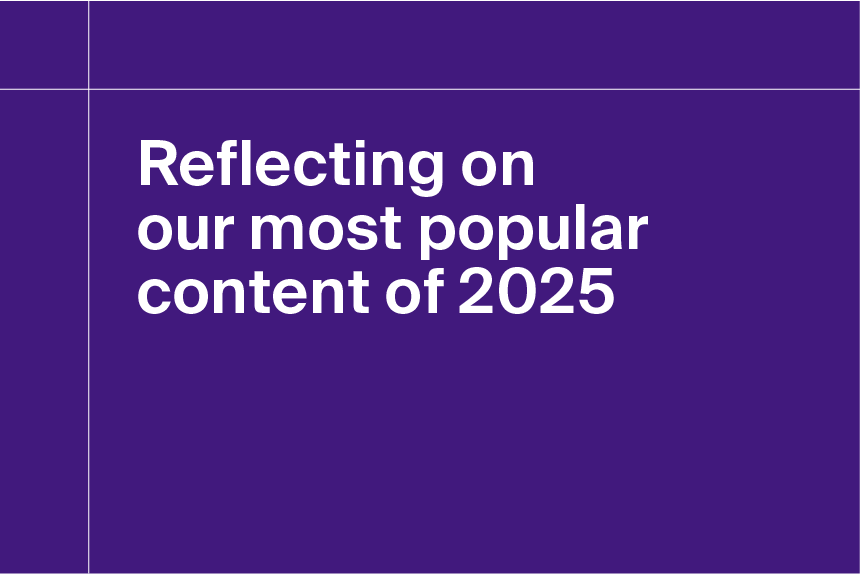Thanksgiving has always been my favorite holiday. I’m a die-hard football fan and would consider myself a certified pumpkin pie connoisseur. But most importantly, I appreciate the opportunity to give thanks. As someone who keeps a finger on the pulse of medical technology, I'm glad to say there's plenty to be thankful for this year.
If you’re having trouble finding common ground with the ones at your table this year, here are five new healthcare innovations that we can probably all agree to be thankful for.
1. Improvements to AI and chatbots
In all honesty, artificial intelligence (AI) and machine learning (ML) are still a little scary to me. However, it feels like we’ve been anticipating the inevitable adoption of this technology in the workplace for years now. In the last 12 months, their popularity has skyrocketed, and more healthcare organizations are adopting AI and ML tools than ever before. According to Statista, the AI healthcare market, which was valued at $11 billion in 2021, is projected to be worth a staggering $187 billion by 2030.
Programs like ChatGPT and other advanced language models (a type of AI that produces human-like responses to a wide variety of prompts) have absolutely taken off in the last year. The program was only introduced in December 2022, yet ChatGPT's applications in the healthcare industry already seem to be endless.
So far, ChatGPT can analyze a patient’s symptoms and medical history to generate a list of potential diagnoses. It can also recommend appropriate medical tests. Experts also believe that AI technology in general could eventually be used to discover new drugs, conduct full surgeries, identify treatment-ready patients, and ultimately save more lives.
At Definitive Healthcare, we’re especially thankful for AI/ML technology, as it’s the foundation of our healthcare commercial intelligence platform, which allows us to help other healthcare organizations discover new market opportunities and make better data-driven decisions.
2. 3D-printed medical devices
Last Thanksgiving, my grandma announced she would be needing a hip replacement after a bad fall. With recent advancements in 3D printing, she might have something extra to be thankful for this year. 3D printing isn’t exactly new. But with rapid advancements in 3D printing technology and materials, along with lower costs to operate 3D printers and manufacture products, it's ready for the mainstream.
These days, 3D printing technology is sophisticated enough to create medical devices, including dental implants, replacement joints, and limb prosthetics. 3D printing has significantly accelerated production speeds for these devices while at the same time reducing manufacturing costs. For example, 3D printing cuts the time it takes to produce hearing aids from more than a week down to a single day.
In 2023, researchers are exploring the use of 3D printers for manufacturing skin tissue, organs, and even medication. While it might still be a few more years before those innovations become commonplace, it’s impressive progress.
Unfortunately for those of us lacking cooking skills, the technology to 3D print a Thanksgiving dinner does not exist – yet.
3. Leveraging social media to improve the patient experience
Normally, social media doesn't provoke feelings of thankfulness in me, but providers are finding ways to use this technology for positive change. You may not typically think of social media and your healthcare provider in the same sentence, but platforms like X (formerly known as Twitter), Instagram, and TikTok have become vital communication tools for providers trying to share information with their patients.
A study by JMIR found that 90% of older adults find and share health-related information on social media platforms, and 90% of people ages 18-24 trust health information shared on said platforms. Healthcare providers have used this to their advantage in recent years.
Providers used social media extensively during the COVID-19 pandemic to share information about the virus and its symptoms with the public. Providers could track population health trends in real time and use that information to direct people to the resources that they needed.
While social media can make it easier to disseminate healthcare information, it also has the unfortunate side effect of easing the spread of misinformation. With so much questionable “intelligence” out there, it’s essential that medical experts and provider organizations continue to leverage social media to confront it and provide credible sources of information for patients.
If you’re looking for information on the latest healthcare trends to share at this year's dinner table, be sure to check out our LinkedIn and X (formerly known as Twitter) pages.
4. Smart bandages
In recent years, the development of wearable healthcare technology that allows a physician to track a patient’s health remotely has accelerated significantly. One potentially revolutionary new form of this technology that feels straight out of Star Trek is the “smart bandage.”
Stanford University researchers developed smart bandages at the end of 2022, a new form of wearable bandage that uses electronic sensors to monitor wound healing. According to the researchers who created it, a smart bandage “promotes faster closure of wounds, increases new blood flow to injured tissue, and enhances skin recovery by significantly reducing scar formation.”
Inside the bandage is a thin layer of wires equipped with temperature sensors. These sensors monitor the progress of healing wounds and can trigger electrical stimulation that accelerates tissue closure.
Unfortunately, the high price point and limited data storage capabilities present a hurdle to the mass adoption of smart bandages. But when they eventually enter the market, they could be miraculous for people with reduced wound-healing ability due to infections, diseases like diabetes, and suppressed immune systems.
As someone with two left feet and a knack for comically injuring himself, these guys can’t hit the shelves fast enough.
5. New antibiotics for Gram-positive bacteria
Dozens of new prescription drugs appear on the market every year to varying degrees of success. But once in a while, a new medication is introduced that has the potential to change the game.
Researchers at the University of California, Irvine believe they have done just that with their new antibiotic that responds incredibly well against Gram-positive bacteria. Gram-positive bacteria have thicker cell walls than regular bacteria, making them harder to treat with typical antibiotics on the market today.
While still in the early testing stages, the new Gram-positive antibiotic has shown promising results in treating MRSA, pneumonia, and tuberculosis.
Additionally, some Gram-positive bacteria have become increasingly resistant to the current antibiotics on the market. New antibiotics targeting these Gram-positive bacteria can give providers hope when confronting the rise of antibiotic-resistant bacteria.
Antibiotic resistance costs the industry around $55 billion annually due to longer hospital stays and the need for secondary treatments. New antibiotics (that patients have yet to develop resistance to) are incredibly valuable when treating patients with these types of life-threatening conditions. Speaking as someone who took several weeks to recover from a case of pneumonia, anything that can drastically improve recovery times for conditions like these would be an absolute game-changer in the industry.
Learn more
Looking for just one more thing to give thanks for? Sign up today for a free trial of Definitive Healthcare’s commercial intelligence platform, and you’ll see why so many companies rely on us to successfully navigate this complex market.




